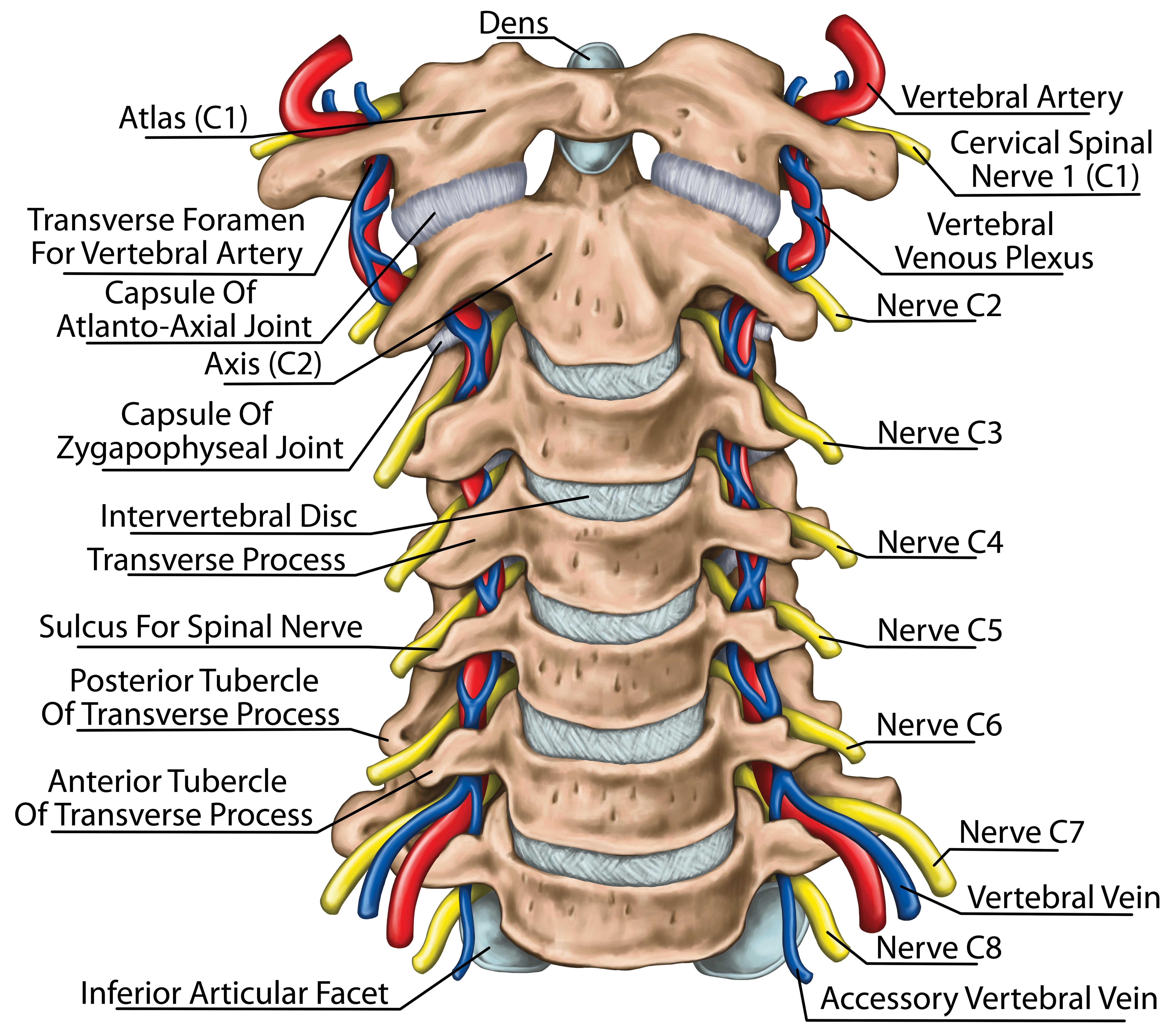Cervical Spine Anatomy

Overview
The cervical spine forms a vital part of your body’s overall structure and function. Located in the neck, it consists of seven small bones known as cervical vertebrae stacked on top of each other. Each plays an integral role in supporting your head, enabling you to move, and protecting the spinal cord and nerve pathways. Understanding your cervical spine anatomy is crucial for those who have been diagnosed with or are at risk of disorders that can affect these structures.
Types
Cervical spine anatomy largely involves seven vertebrae, labelled C1 to C7. These bones are different in structure and have unique functions.
– C1, also known as the Atlas, holds up the head and allows for nods.
– C2, or the Axis, allows for rotation of the head.
- C3 to C7 vary in shape and structure, with the sole purpose of providing support and flexibility.
In between these vertebrae are shock-absorbing discs preventing the bones from rubbing together.
Causes
Different factors might cause issues with cervical spine health.
– Ageing which may lead to wear and tear
- Bad posture over extended periods
– Accidents leading to injuries of the neck
– Diseases such as rheumatoid arthritis or meningitis
– Genetic conditions such as Down syndrome
Symptoms
Problems with the cervical spine can cause a variety of symptoms:
– Pain and stiffness in the neck
– Headaches, especially in the back of the head
– Dizziness and balance problems
– Tingling, numbness, or weakness in your arms, hands, legs, or feet
– Difficulty walking or coordinated movements
- Difficulty swallowing or speaking
Remember, these symptoms can also be indicative of other conditions, so it’s essential to seek professional medical help for a reliable diagnosis.
Diagnosis
To diagnose cervical spine disorders, your healthcare provider may use methods like:
– Physical examinations: Testing your reflexes, strength, and the range of motion.
– Imaging tests: Including X-rays, CT scans, and MRI scans to visualise the vertebrae and discs.
– Neurological exams: To check for any signs of nerve damage.
Treatment Options
Depending on the severity of the disorder, treatments might range from non-invasive to surgical methods:
– Medication: Mild to moderate pain may be controlled with pain relievers or muscle relaxants.
– Physical Therapy: Strengthening exercises and stretches can help reduce pain and increase flexibility.
– Injections: Steroids or anaesthetics may be injected to alleviate pain.
– Surgery: This is typically reserved for severe cases that don’t respond to other treatments.
Living With Cervical Spine Disorders
Managing cervical spine disorders involves careful self-care:
– Engage in exercises recommended by your physical therapist.
– Maintain a good posture at all times.
– Include nutritious food in your diet for healthier bones.
– Regularly take prescribed medications.
– Use heat or cold therapy to manage pain.
When to Seek Help
Seek immediate medical attention if you experience:
– Sudden, severe neck pain
– Pain that spreads down arms or legs
– Loss of bladder or bowel control
– Inability to move arms or hands
– Trouble walking or maintaining balance
Remember to prioritize your health—prompt action can prevent serious complications and help maintain a high quality of life.
